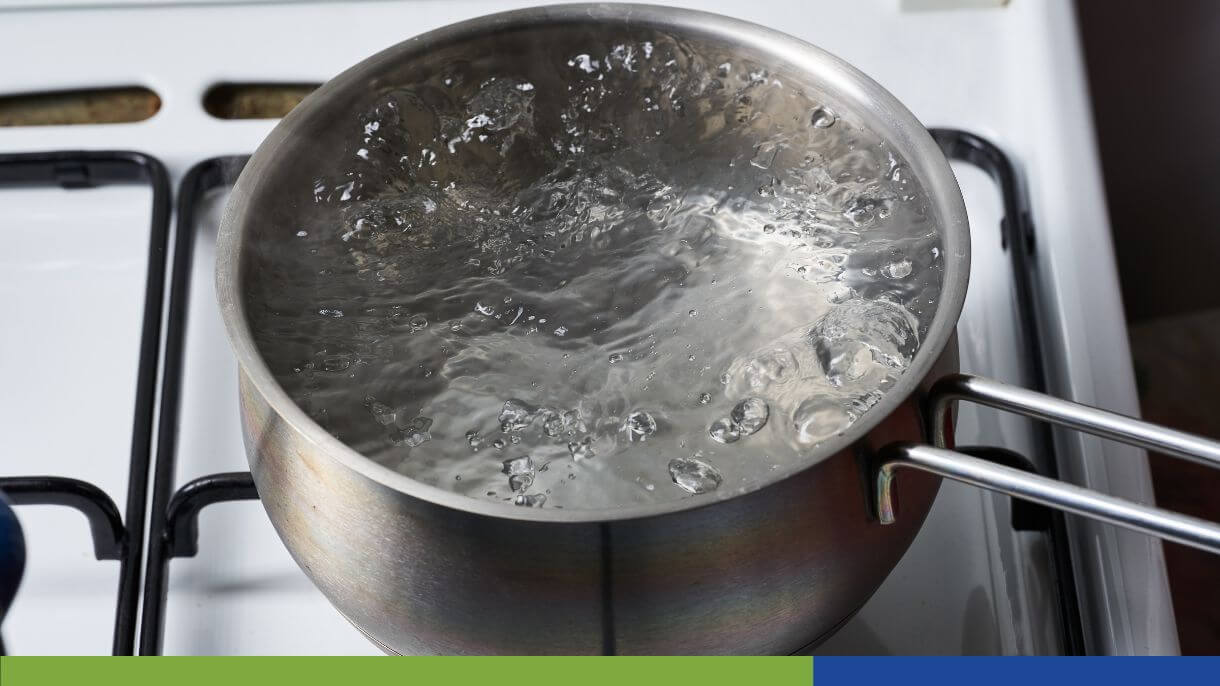

First and foremost, what is a “Boil Water” advisory?
As your water utility company, our top priority is ensuring your safety. We follow all state and federal environmental and regulatory requirements, and we diligently adhere to all these requirements before we issue a boil water advisory. The advisory itself includes a series of recommendations and steps to ensure safety during a timeframe.
Read on…
What might prompt a boil water advisory?
A boil water advisory occurs whenever we believe that the water quality in your area may have the potential to have been compromised. Different circumstances or events can prompt a boil water advisory, including the discovery of potentially harmful microorganisms or contaminants in your community’s water system identified in our ongoing sampling that could potentially make you sick. The most common examples would be a drop of pressure in the water distribution system or a water main break. The pressure drop provides the opportunity for potential contaminates to enter the water but does not mean it has happened or will happen.
What happens once a boil water advisory has been issued?
Once a boil water advisory has been issued, we collect samples from your water system to check and confirm whether there are any potentially harmful contaminants present in the water supply. We take these samples as soon as possible and follow up with designated state certified laboratories to obtain results within 24-48 hours. If the samples test negative for pathogens, then we can issue a boil water advisory lift. If the test results are positive for pathogens, then the boil water advisory continues as we work to identify a resolution. Our goal is to be as thorough as possible while aiming to lift the boil water advisory as soon as we have assurances that your water is safe.
What Should You Do During a Boil Water Advisory?
Boil water advisories include information about safe methods for preparing food, drinks, and ice, along with precautions for dishwashing, bathing, brushing teeth, and regular hygiene. They also include recommendations for using bottled water to drink or bringing your tap water to a full rolling boil for at least one minute, not using any water from appliances connected to your water line, not washing dishes, and, suggestions to use disposable plates, cups, and utensils. If you have an infant, the safest feeding options would be a ready-to-use liquid formula, bottled water for powdered formula, or breastfeeding if possible.
Anything else I Need to Do?
Another thing to consider when receiving a boil water advisory is personal hygiene. When it comes to showering or bathing, you want to be careful not to swallow any water and use caution when bathing infants. It is safe, however, to shower – provided you avoid swallowing the water. To avoid ingesting any potential germs, we suggest that you use boiled water that has been cooled (or use bottled water) to brush your teeth or to clean surfaces like toys and countertops.
What about Pets?
Pets can potentially get sick from the same germs as people do. We recommend that if a boil water advisory has been issued, you give your pets bottled water or boiled water that has been cooled to drinking temperature.
What else should I be doing during a boil water advisory?
In many cases, it is perfectly fine to wash your hands with soap and tap water. If there is no soap available, use an alcohol-based hand sanitizer that is at least 60% alcohol. It is still safe to wash clothes and dishes with your appliances as normal during an advisory, along with caring for your garden and houseplants. And as noted above, bathing is fine, provided that you avoid swallowing or ingesting the water.
Be safe – Be prepared!
If your community receives a boil water advisory, it is important to follow recommended protocols until the advisory has been lifted. The health and safety of your community is our priority, and our boil water advisories are meant to ensure that your health and safety are protected.